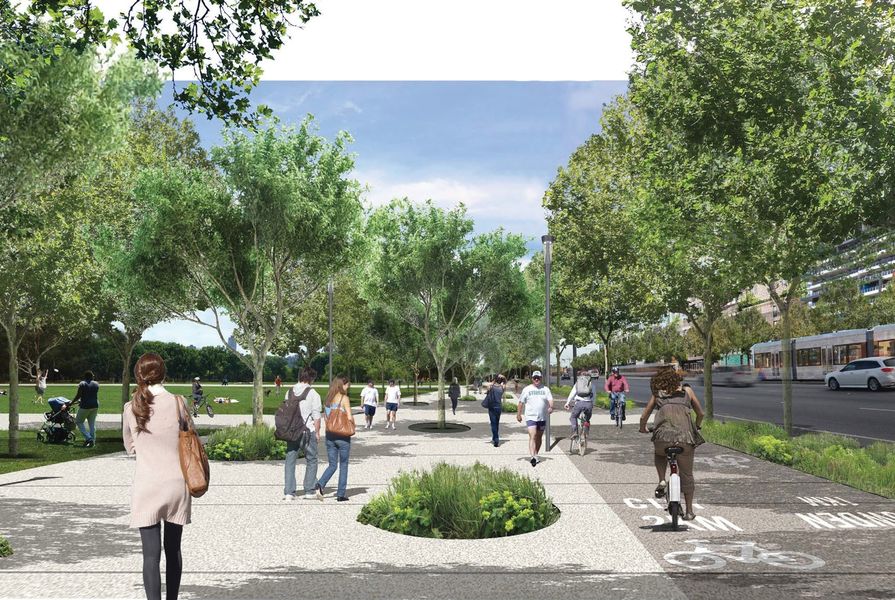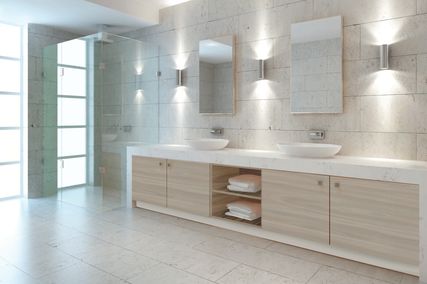The Union Internationale des Architectes, known universally as the UIA, is an association of architecture institutes from around the world. Formed in 1948 in Lausanne, with an initial group of twenty-seven countries, including Australia, the UIA represents architecture at the international level through United Nations organizations ECOSOC, IOC, UNECE, UNESCO and WHO. It also works with UN-Habitat, ICOMOS, the United Nations Environment Programme and the Commonwealth Association of Architects, among others. There are now over 130 “member sections,” from Afghanistan to Zambia. Every three years it holds an international architectural congress and a policy-making assembly. Day-to-day the UIA operates out of Paris.
Within the profession, it operates continuing “commissions” on architectural education, professional practice and international competitions and “work programmes” on responsible architecture (encompassing the work on sustainability), architecture and society, urbanization, habitat (housing), cultural identity and various specialized facilities.
Back in 1990, Australian John Davidson was vice-president of the UIA for Region IV (Asia and Oceania). At the 1990 UIA Congress and Assembly in Montreal he proposed that the UIA should engage with the emerging environmental challenge that we now call climate change. As a result the UIA established a working group on “The Implications of the Greenhouse Effect for Architecture and the Built Environment.” I was appointed to convene the group and report to the UIA Congress and Assembly in Chicago three years later. The project included representing the UIA at the 1992 UN Conference on Environment and Development (UNCED) in Rio de Janeiro and working with the American Institute of Architects to develop the environmental theme for the 1993 Chicago Congress of the UIA.
Ideas were developed and fed through the UIA Secretariat into the preparatory committee system of the UN conference. Only when the final draft of the proposed outcome document appeared – Agenda 21, the agenda for the twenty-first century – did it become clear that the UN bureaucracy had ignored architecture and the built environment almost completely. Frustrated and embarrassed, the UIA set about challenging this. The built environment would be a major victim of climate change, it was the principal processor of carbon and thus the major villain, and it must be an integral part of the solution: the white knight.
Our New York group presented this victim, villain and white knight message to the UNCED Final Preparatory Committee and spoke directly to Maurice Strong, the Secretary-General of UNCED. A few weeks later, with help from Sir Ninian Stephen, then Australian Ambassador for the Environment, the same proposition was put to Strong in Melbourne. Two days later our NZ colleague confronted him with exactly the same message. The UN bureaucracy got the idea. Agenda 21 was completely reorganized to include a new chapter, “Chapter 7: Promoting Sustainable Human Settlement Development.” The importance of this is not the content of Chapter 7; it is that it exists in the official UN agenda for environment and development in the twenty-first century. The critical role of architecture and the built environment no longer needs to be argued.
In Chicago, some 14,000 participants were exposed to a week of keynote addresses on how architecture and the built environment relate to the natural environment and sustainability. This was supported by case studies and an exhibition of entries to an international ideas competition, A Call for Sustainable Community Solutions. The outcome of that Congress was the Chicago “Declaration of Interdependence for a Sustainable Future.” This became the sustainability manifesto of the UIA and influenced many of the member sections. The then RAIA adopted it as the preamble to its environment policy.
The election of Australian Louise Cox as president of the UIA in 2008 brought additional energy and commitment to the sustainability mission. Cox identified the Conference of the Parties (COP), UN International Panel on Climate Change Conference (IPCC), to be held in Copenhagen in 2009, as a special opportunity. Her central message to the global forum was “sustainable by design.” She pressed the case again in Cancun at COP16 (2010) and her successor as UIA President, Albert Dubler, continued the message in Durban at COP17 (2011). It is a powerful message. Sustainable futures do not happen by holding on to the present or by accident. Sustainability is something that we must make through redesigning our lifestyles and life-supporting equipment. That equipment, in turn, is dominated by our buildings and infrastructure. This approach rightly casts architecture in a central role in creating sustainable futures.
After Copenhagen, UIA members were surveyed and the review presented to the 2011 Tokyo Congress and Assembly. As part of that report I offered recommendations for future action and undertook to operate the proposed project. That is where the current Sustainable Futures – Responsible Architecture Project begins.
Simply, it asks those member sections that have well-developed environment and sustainability programs to offer assistance to others that have not. The request rests on the proposition that sustainability is not divisible. We cannot be partly sustainable. Harking back to the Declaration of Interdependence, we are either sustainable on a global basis or we are not.
From a professional practice point of view there is an interesting parallel here with the decision of IBM and others to work cooperatively on the development of open access computer operating systems. IBM still competes very successfully but it does so based on the computing services it provides beyond the basic operating system. So it should be with sustainability. We all need each other to be actively advancing sustainability and responsible architecture. Professional services provided beyond that basic level form the realm in which competition should occur.
The new round of enquiry about the actions of the member sections is both disappointing and encouraging. As usual, the response has been sluggish. However, correspondence indicates a lot of activity in recent years – much of it unreported – and that some member sections are actively supporting each other in their sustainability endeavours.
While it may be possible, and indeed worthwhile, to make some programs available to others through the UIA, much progress may also be made through local cooperation within self-selecting groups, either on a regional basis or on the basis of similar climates and socioeconomic conditions. The task, at least in part, is to encourage all that. We now look forward to providing a review of the project to the 2014 UIA Congress and Assembly that will be held in Durban in August 2014.
Source

Discussion
Published online: 29 Jan 2014
Words:
Allan Rodger
Images:
Courtesy Oxigen
Issue
Architecture Australia, September 2013
















